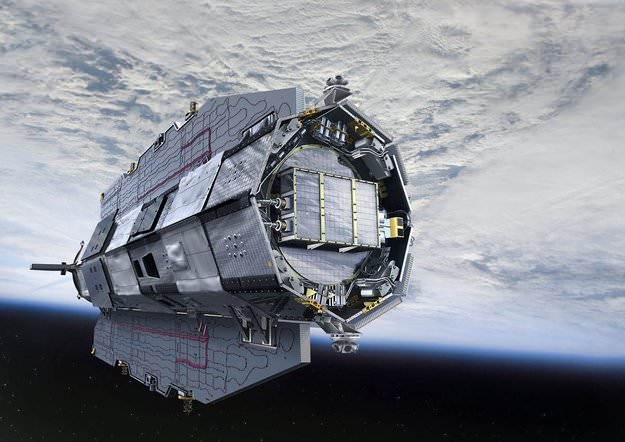ESA's GOCE satellite has reentered Earth's atmosphere, with most of the spacecraft disintegrating high in the atmosphere. There have been no reports of damage to property or sightings of debris. Astrophysicist and satellite watcher
Jonathan McDowell
reported that the spacecraft came down at approximately 00:16 UTC on November 11, 2013 over the South Atlantic Ocean east of Tierra del Fuego – an archipelago off the southernmost tip of the South America.
The last visible sighting of GOCE was at 22:42 UTC on Nov. 10 as it passed 121km (75 miles) above Antarctica,
BBC reported.
While most of the 1100 kg satellite disintegrated in the atmosphere, an estimated 25% reached Earth's surface, likely falling in the ocean.
"The one-ton GOCE satellite is only a small fraction of the 100–150 tons of man-made space objects that reenter Earth's atmosphere annually," said Heiner Klinkrad, Head of ESA's Space Debris Office. "In the 56 years of spaceflight, some 15,000 tons of man-made space objects have reentered the atmosphere without causing a single human injury to date."
The GOCE spacecraft was designed to fly low and has spent most of its mission roughly 500 km below most other Earth-observing missions, at an altitude of 255 km (158 miles), but has recently been at the lowest altitude of any research satellite at 224 km (139 miles).
Its durable construction and sleek design allowed it to stay in space for longer than expected; it nearly tripled its planned lifetime.
With GOCE data, scientists created the first global high-resolution map of the boundary between Earth's crust and mantle – called the Moho – and to detect sound waves from the massive earthquake that hit Japan on 11 March 2011, among other results.
Read more about GOCE at ESA.
 Universe Today
Universe Today
